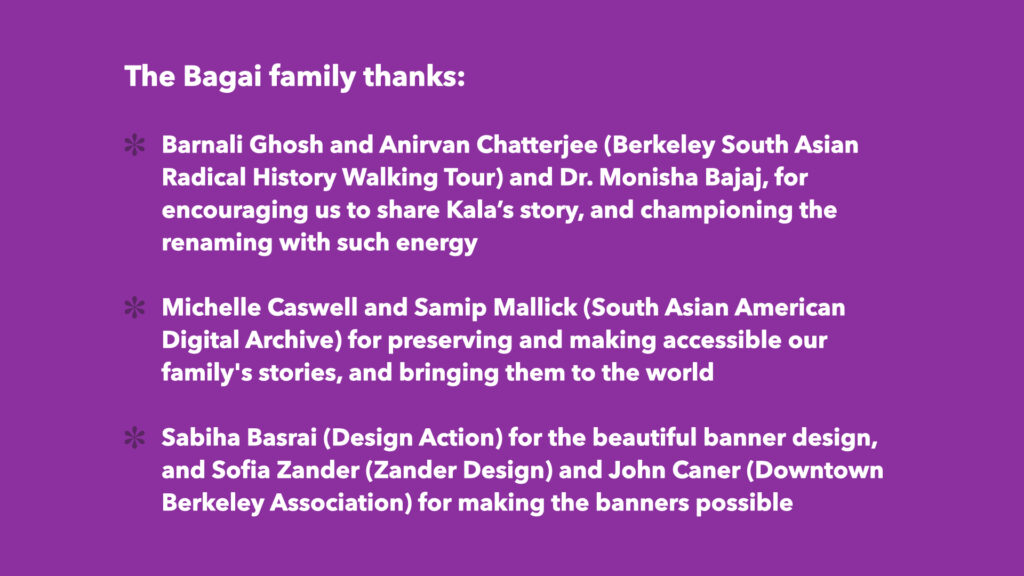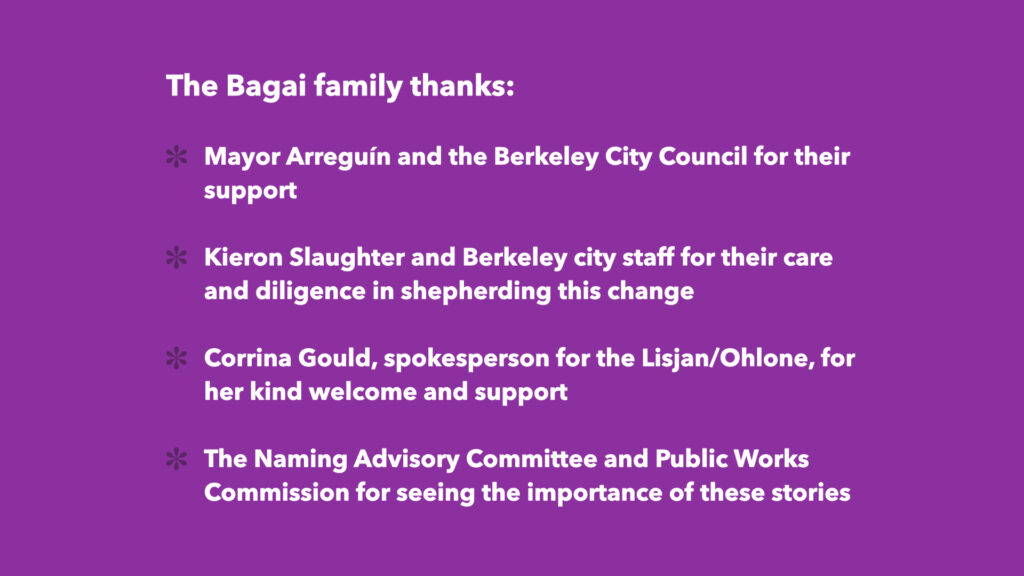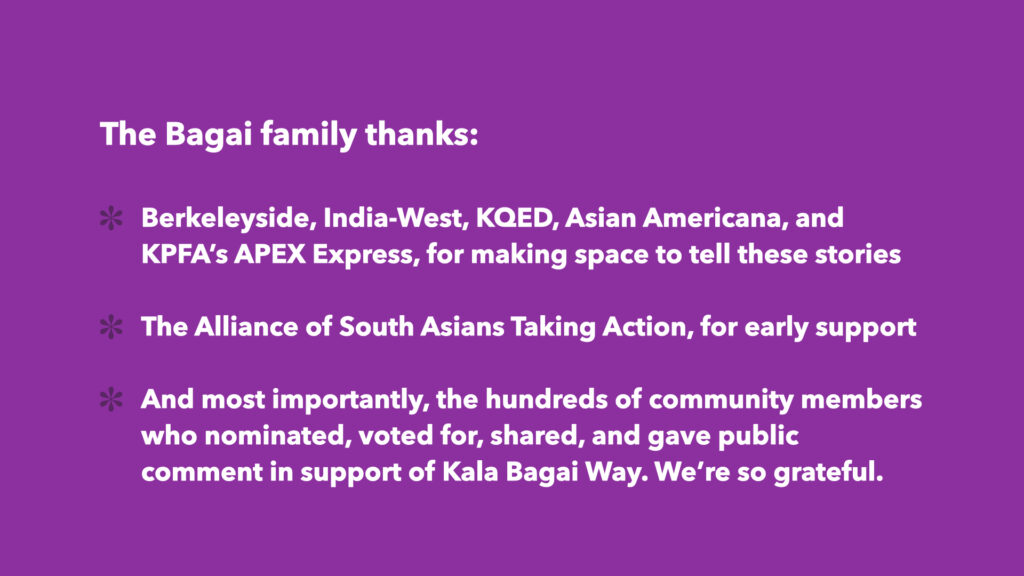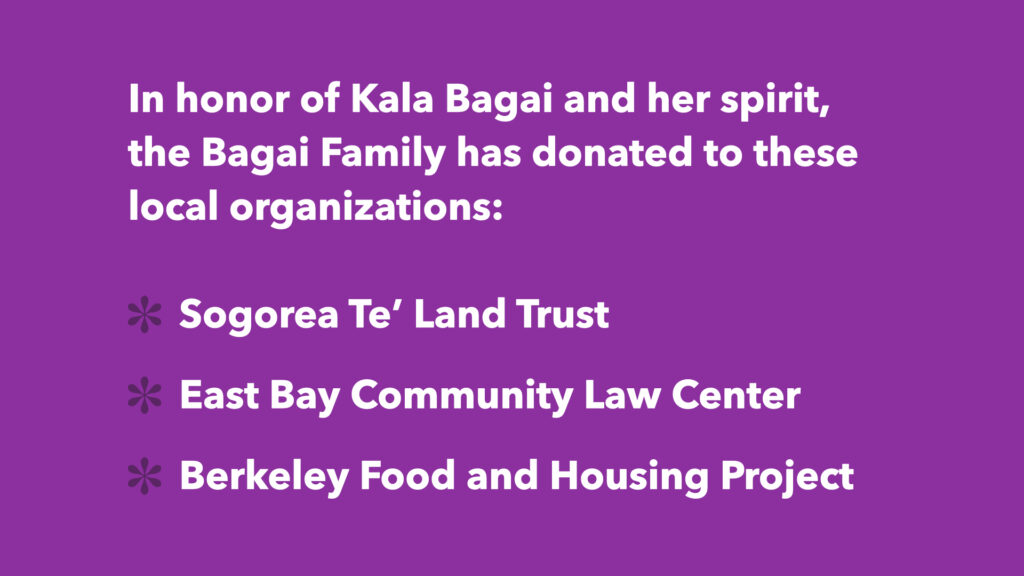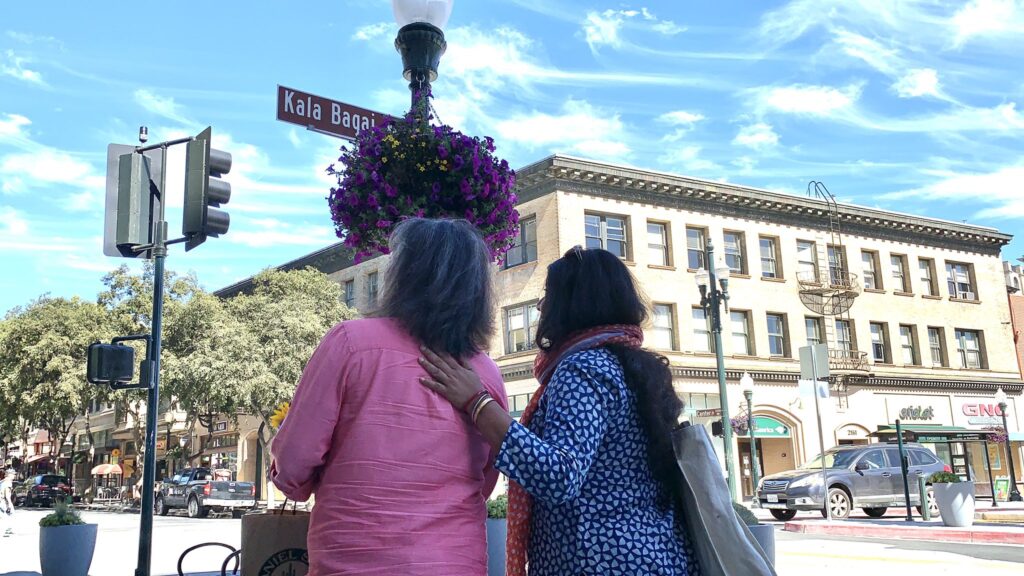
1. The story of our street
In 2020, Berkeley made history by renaming Shattuck Avenue East, a two-block street in the heart of downtown Berkeley, “Kala Bagai Way.” This was the first time an Asian American name appeared on any of Berkeley’s approximately five hundred streets—even though about 1 in 5 residents are Asian American.
The street name didn’t appear by itself. It was the result of a year of coordinated education and campaigning. Organizers worked to honor Kala Bagai‘s legacy, while helping to address historical erasure, reclaim public spaces, and confront Berkeley’s own exclusionary past.
2. Discovering Kala Bagai‘s story
Kala Bagai immigrated to the United States from British India in 1915 with her husband and children. The Bagais built a new life in the San Francisco Bay Area. But when the Bagais tried to move into their new home in Berkeley, California, they were barred from entering. This was another example of the anti-Asian discrimination common in Berkeley. She would go on to became a community builder in Southern California, offering new immigrants the welcome she herself never received. (Read the whole story.)
Kala Bagai’s story has become better known over the past decade, as granddaughter Rani Bagai shared her family’s history, Erika Lee and Judy Yung wrote about her, and Michelle Caswell and Samip Mallick of the South Asian American Digital Archive preserved her papers and oral history interview.

3. The start of the campaign
The idea to rename Shattuck Avenue East (between Center St. and University Ave.) emerged in 2019, as the city of Berkeley and local businesses wanted to improve wayfinding, as part of a major street reconfiguration. Local activists Barnali Ghosh and Anirvan Chatterjee, who run the Berkeley South Asian Radical History Walking Tour, followed the renaming process, and wondered whether it could be a chance to finally honor immigrant or Asian American stories.
The campaign had three lead organizers, and a large number of engaged activists. Barnali Ghosh focused on community engagement and navigating city process, Anirvan Chatterjee focused on online organizing and historical context, and Monisha Bajaj, professor of education at the University of San Francisco, focused on framing and engagement. They weren’t alone. Dozens of local activists testified, wrote, and organized others, while over three hundred would participate online.
The city’s renaming process invited the public to suggest names for the two-block downtown street, formerly Shattuck Avenue east.
There were 913 submissions, with ideas ranging from Bears Boulevard, to Old Town Road, to Barack Obama Way. In addition to Kala Bagai, Ghosh and Chatterjee suggested two other names: Yuri Kochiyama, the Japanese American civil rights leader who died in Berkeley, and Sita Vemireddy (Chanti Prattipati), a young woman who died after being trafficked to Berkeley by the Reddy family.
But once organizers started to mobilize support for Bala Bagai Way using an online form that emailed the naming organizers, about 30% of total suggestions were for Kala Bagai, helping ensure that the little-known figure would have to be taken seriously.
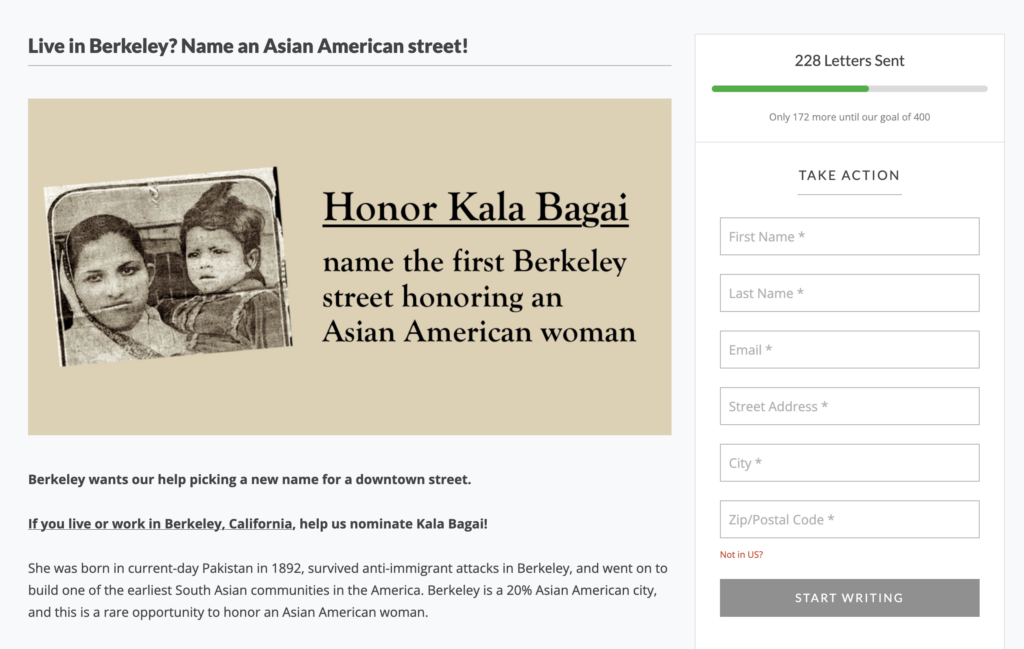
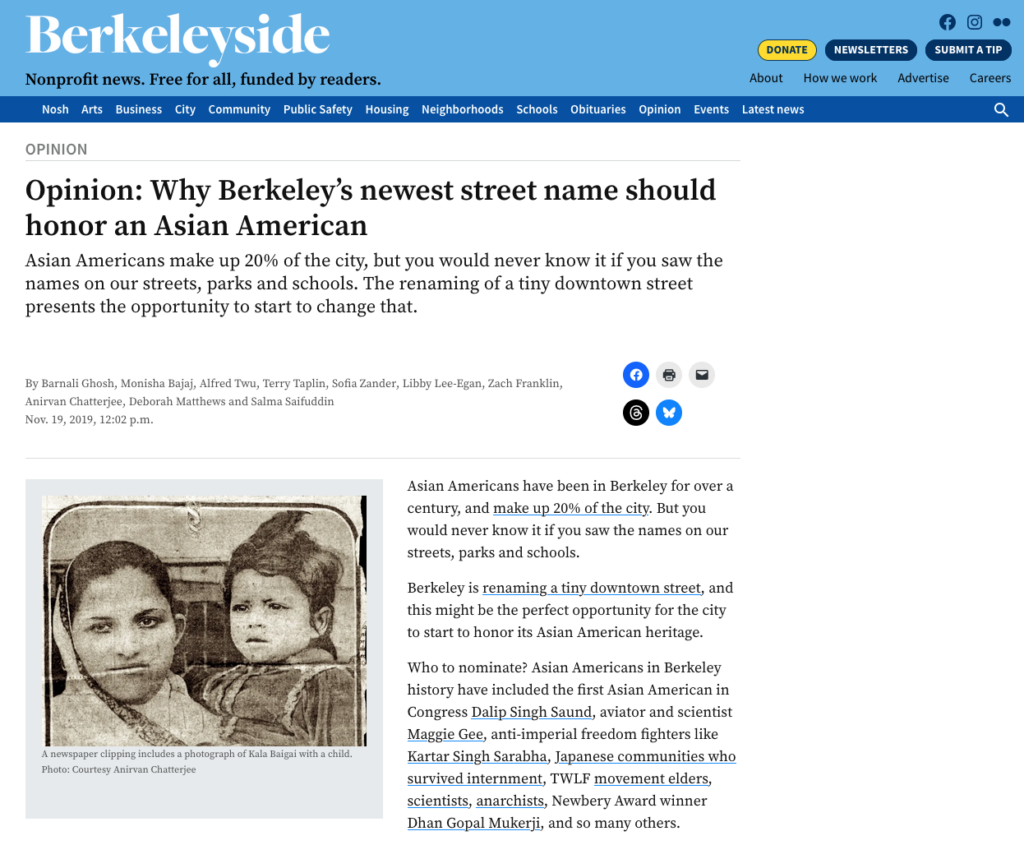
4. Building support
The campaign succeeded by building a broad coalition, going beyond ethnic pride. It launched with an email campaign, first announced at an Alliance of South Asians Taking Action (ASATA) meeting, and then promoted on Twitter, Facebook, and the walking tour mailing list. Pro-housing, South Asian, and Black activists published a joint op-ed in Berkeleyside, explaining how Kala’s story connected to Berkeley’s history of exclusionary housing policies, such as redlining and segregation. Student activists, educators, and local families lent their voices, testifying at city meetings and rallying support online.
As the campaign proceeded, it became increasingly important to share and explain Kala Bagai’s story. Granddaughter Rani Bagai shared a first person narrative about her grandmother’s life in Berkeleyside. SAADA, Asian & Pacific Islander Americans in Historic Preservation, Shaping San Francisco, and East Bay Yesterday wrote letters of support, adding historical credibility. Anirvan Chatterjee created a Wikipedia page, making Kala Bagai’s story easier to find and research. Corrina Gould, tribal chair of the Confederated Villages of Lisjan Ohlone, wrote a long letter of support and solidarity, framing Kala Bagai’s experience through the lens of colonialism and displacement.
As the campaign progressed, and conversations around naming and history grew louder because of the 2020 Black Lives Matter movement, it became easier to explain why you’d would want to name a street for a survivor of local racism. It became even more salient that Bagai was a woman, an immigrant, an Asian American, a member of a minority faith, and a quiet community-builder.
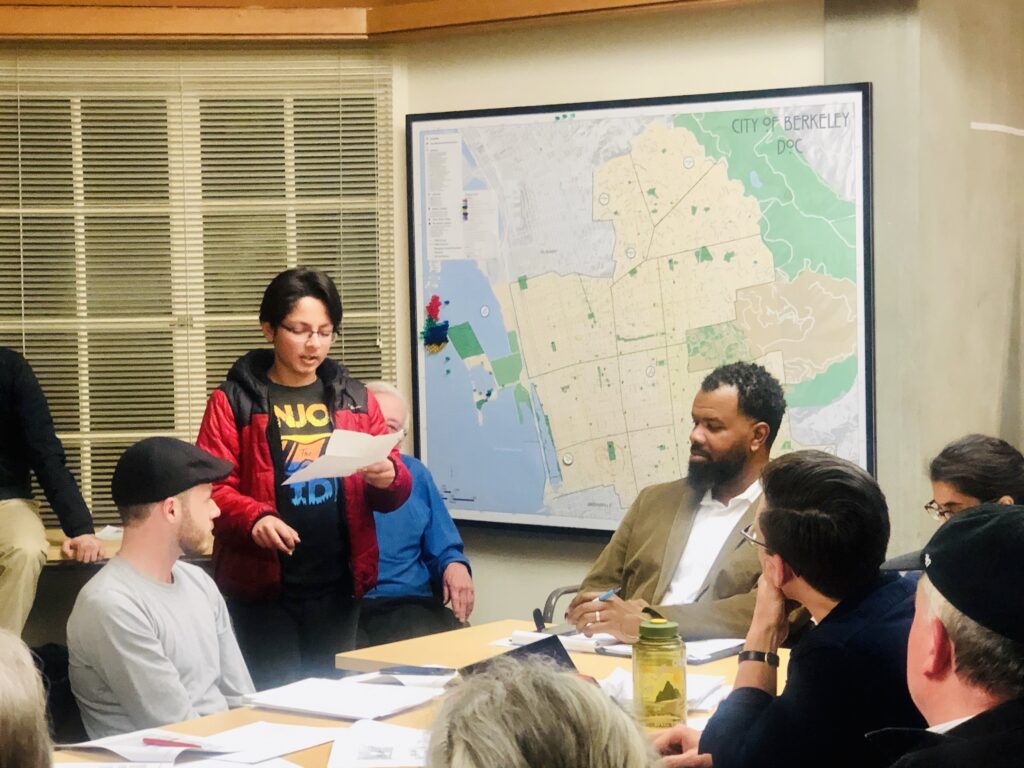
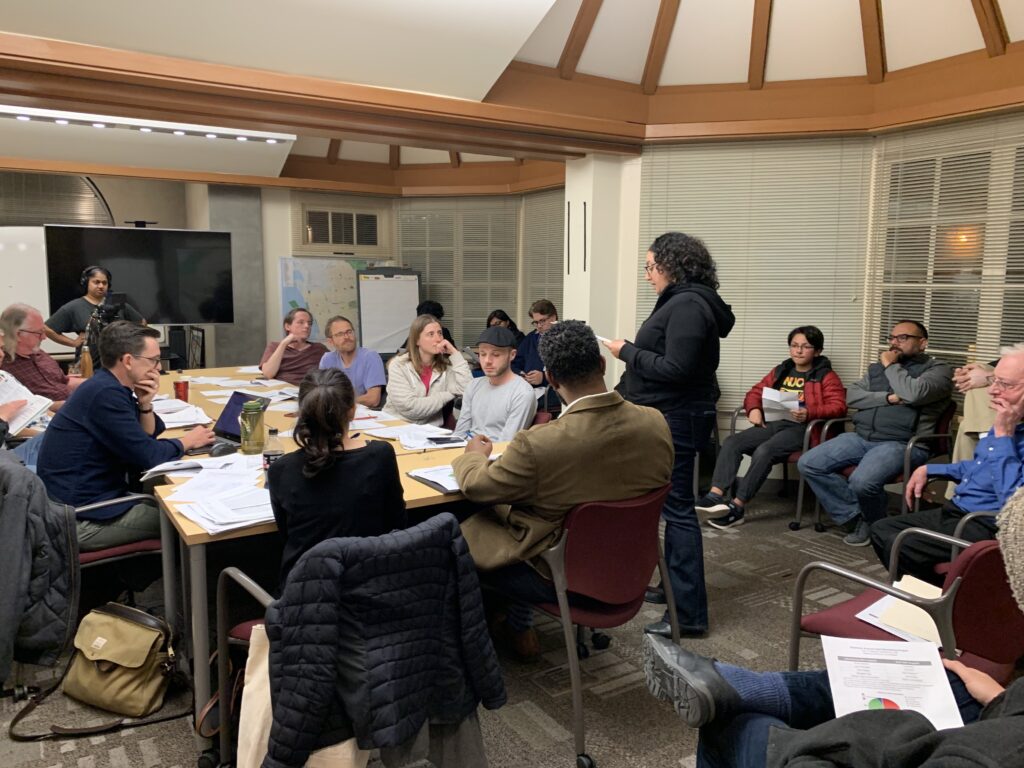
5. The renaming process
Renaming a street in Berkeley is a bureaucratic process, requiring persistence to navigate and organize around. Here’s how the campaign unfolded:
- Oct 2019: City’s first meeting about reorganizing and renaming the east side of Shattuck Avenue. In response, organizers work to get hundreds of nominations for Kala Bagai submitted.
- Jan 6, 2020: Proposals submitted to the city’s Naming Action Committee, which recommends it with unanimous support
- Jan-Sep 2020: Organizers coordinate testimonies, emails, op-eds, and letter-writing campaign
- Feb 7, 2020: Public Works Commission reviews names, and unanimously supports Kala Bagai Way among top picks after public comment
- Feb 15, 2020: City launches online poll allowing public input on the finalist names, including Kala Bagai. Hundreds vote in support.
- Jul 15, 2020: City Council FITES subcommittee recommends adopting the name, as supporters offer testimony on Zoom (a new option post-pandemic).
- Sep 15, 2020: City Council votes unanimously to name “Kala Bagai Way”
- Feb 9, 2021: City Council approves funding for the new street sign
- Feb 11, 2021: Street officially unveiled in city’s public dedication ceremony, with a national online watch event organized by SAADA
At every stage of the long and twisty process, campaigners organized emails, votes, letters of support, and public comment at city meetings, in order to demonstrate support and apply friendly pressure.
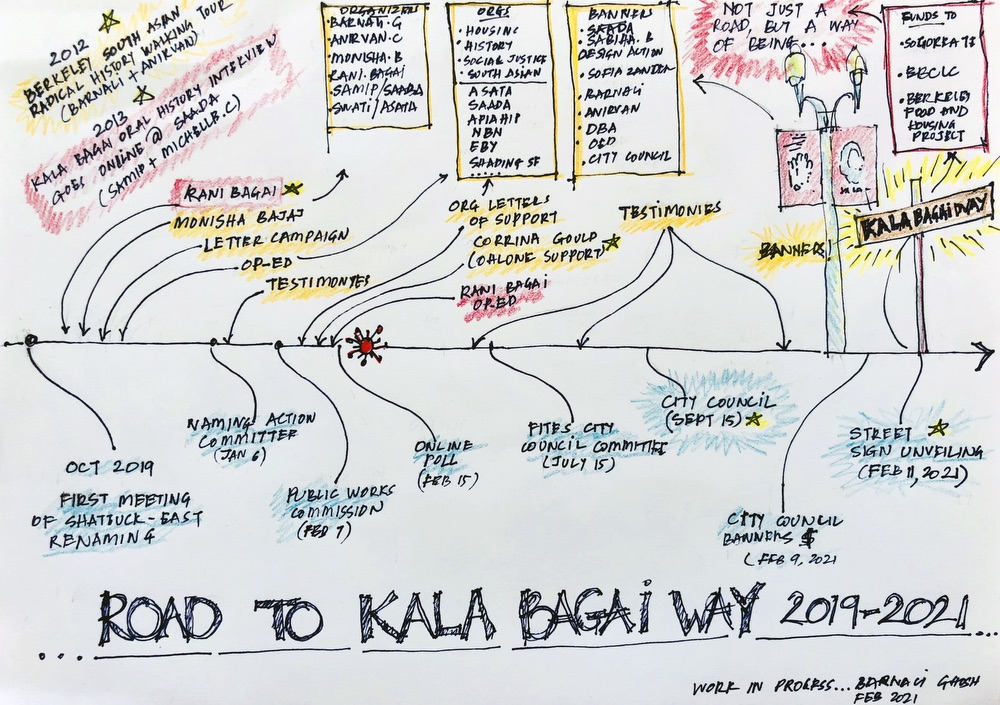
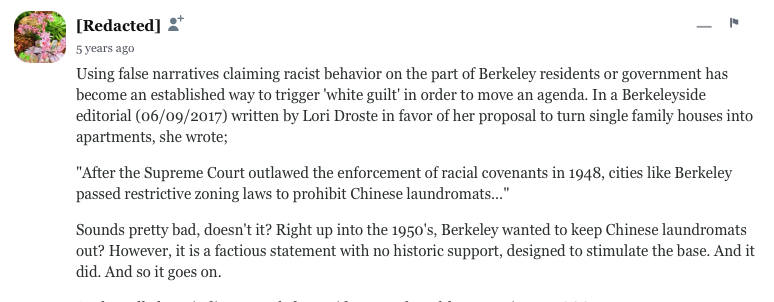
6. Facing challenges
The campaign faced some obstacles. Some community members questioned whether Kala Bagai’s story was important enough for a street name. This critique demonstrated some of the biases that have historically kept women and people of color out of public memory. Kala Bagai Way organizers pushed back, pointing out how the names of white male landowners have long dominated Berkeley’s streets, and the importance of telling a more complete story.
A few online commenters suggested that Bagai’s memory of facing housing discrimination could not be trusted, or that perhaps the events took place in the adjoining cities of Oakland or Emeryville. Organizers responded that her memory of racism was entirely in line with what other Asian Americans were experiencing at the time, and that her story would have been just as relevant if it had happened in the next city over.
There were also hundreds of other names in contention, many of which might have also made for an excellent street name. While Kala Bagai Way organizers had their preferred name, they also decided that they would actively campaign for any reasonable BIPOC name that made the final cut. For example, hearing of some support for an indigenous name, organizers reached out to Ohlone activists, ready to pivot their efforts if it was indeed the community’s preference, rather than risk fracturing Asian and Native American communities. They found solidarity, rather than competition: the Confederated Villages of Lisjan/Ohlone responded with a powerful two-page letter warmly endorsing Kala Bagai Way.
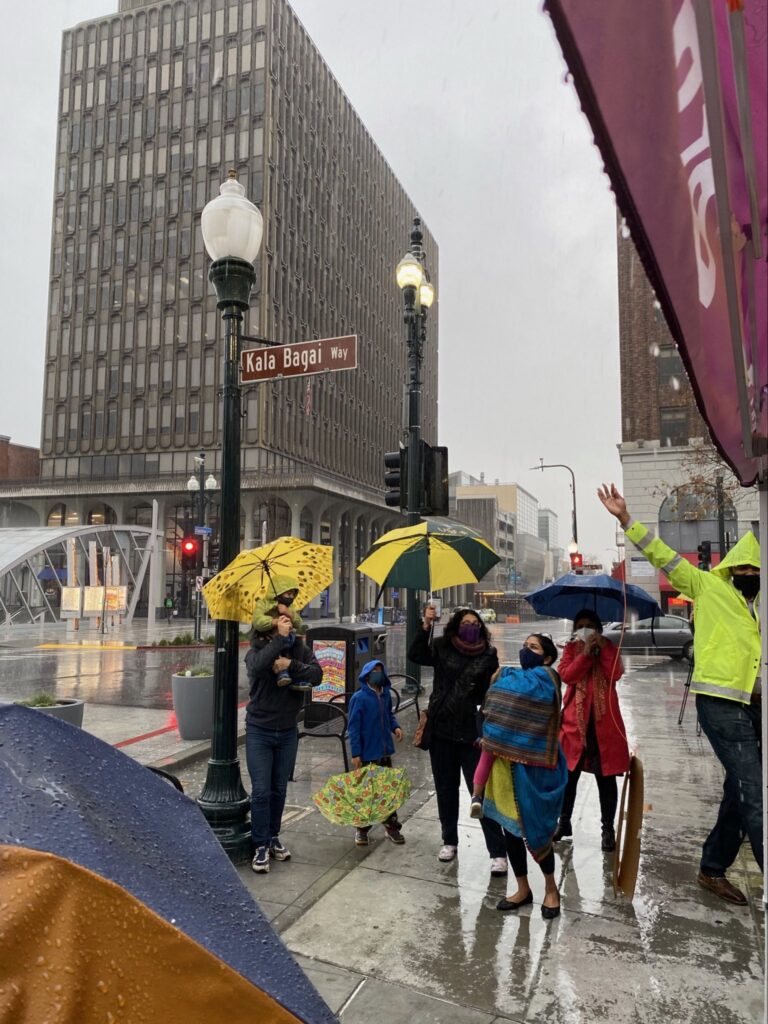
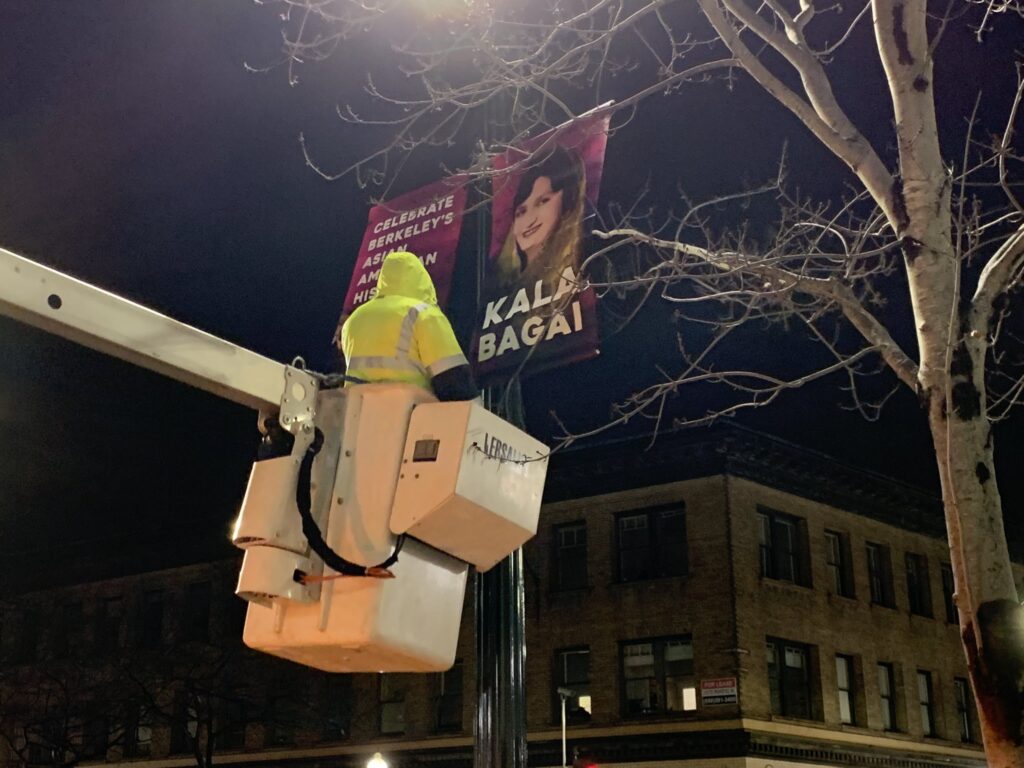
7. The renaming
After a year of community education and organizing, the Berkeley City Council voted unanimously for Kala Bagai Way in September 2020. The process of marking the name change began with Barnali Ghosh and Sofia Zander siting banners up and down the street, designed by Sabiha Basrai of Design Action. The name would start to feel even more real after it appeared on online maps. But nothing was as important as the official unveiling of the new street signs.
The dedication ceremony for Kala Bagai Way in February 2021 was a moving event attended by activists, community members, and local civic leaders. Speakers celebrated the renaming as a victory for immigrant stories and a step toward a more inclusive Berkeley. Several elected officials (Mayor Arreguin, and Councilmembers Droste, Robinson, and Hahn) donated from their own discretionary funds for the dedication, while Kieron Slaughter and other city staff marked the end of a successful renaming project. Meanwhile, on the street itself, the Downtown Berkeley Association’s ambassadors were learning the story of the street, so they could share it with others.
Meanwhile, people from across the country gathered on Zoom during SAADA’s simultaneous national livestream celebration. On the call, Rani Bagai spoke about her grandmother’s perseverance and grace, calling the renaming “the greatest gift to her memory.” She would visit Berkeley some months later, to connect in person with many involved with the campaign.
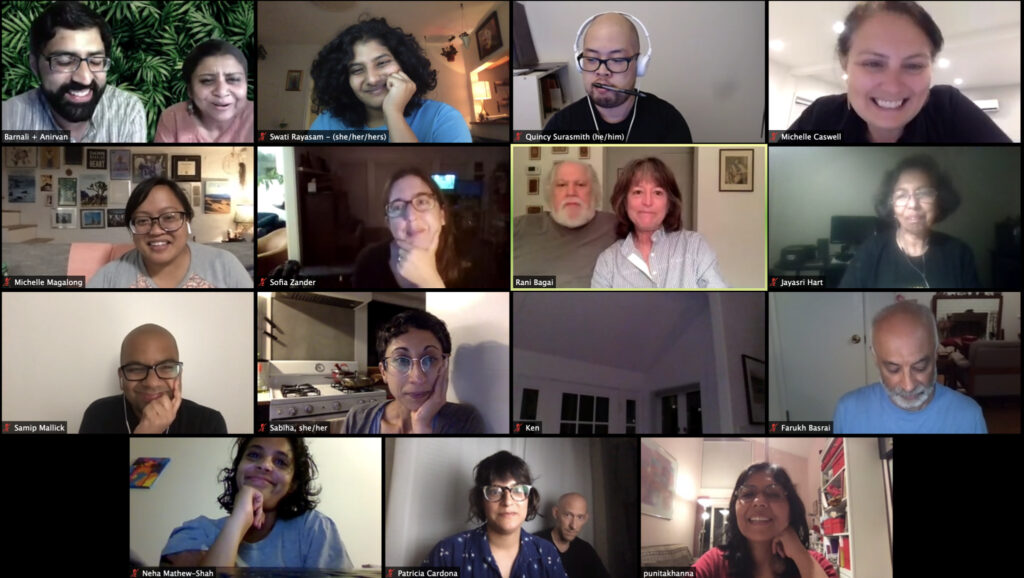
8. The big surprise
Months after the street renaming, Chatterjee discovered evidence that in 1916, Kala’s first husband Vaishno Das used to run a small Indian curio shop on 2139 Center Street—just half a block away from the new Kala Bagai Way. During the campaign, organizers had believed that the street being renamed had no particular connection to the Bagais. They had no idea that Kala Bagai and her family had a deep link to the very street that would be named for her a century later.
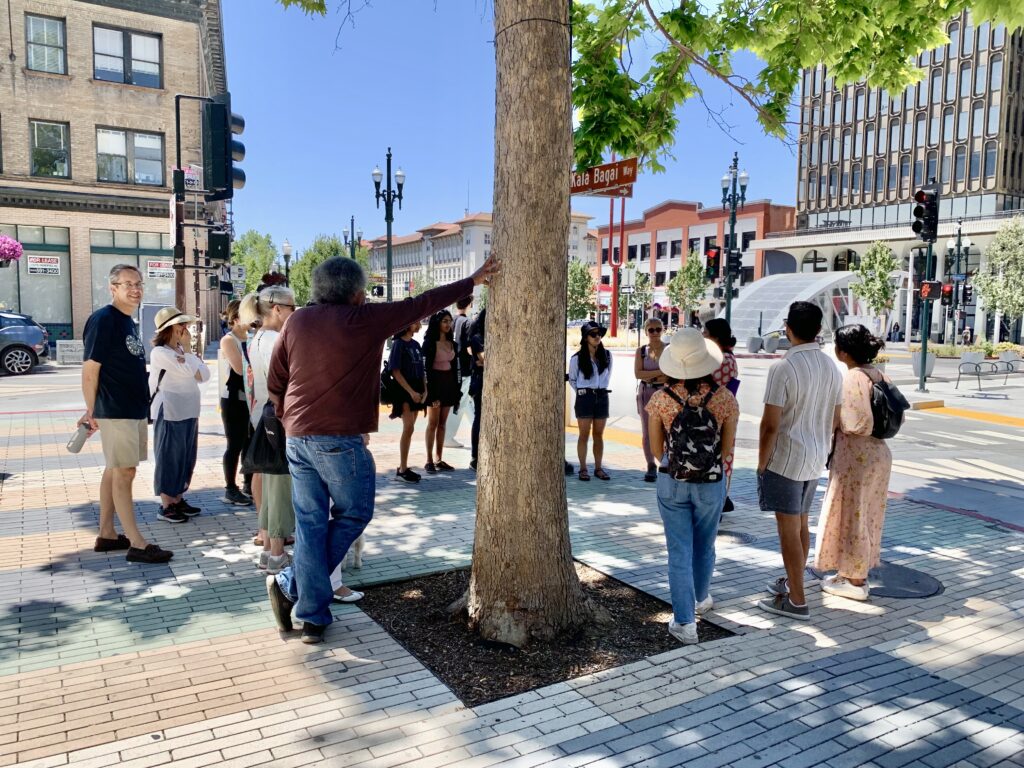
9. Kala Bagai Way today
Kala Bagai Way sits in the heart of downtown Berkeley. Located just a block away from BART, UC Berkeley, and Berkeley City College, it continues to be heavily trafficked, home to restaurants, banks, housing, and a new hotel.
Some community members have described the happy surprise of walking down the street, and seeing a banner with an image of Kala Bagai in a sari. The city’s newest residents remember the name as always having been there.
Campaigners are now working on adding a plaque on the street, and the monthly Berkeley South Asian Radical History Walking Tour now includes Kala Bagai Way as a tour stop. Elected officials, including local Councilmember Igor Tregub, continue to tell the story of the process of the naming. The street naming campaign received global media attention, and helped spur more conversations around Kala Bagai’s story in print media, YouTube videos, and social media.
Credits and sources
It’s not always easy to tell the story of a campaign. Hundreds of people played a part, and each of them will have a slightly different version. This retelling was put together by Anirvan Chatterjee and Barnali Ghosh, and builds on this Asian Americana episode, the “Road to Kala Bagai Way” timeline, Chatterjee’s long Twitter thread documenting the campaign’s progress, Frances Dinkenspiel’s Berkeleyside story, among other sources.
